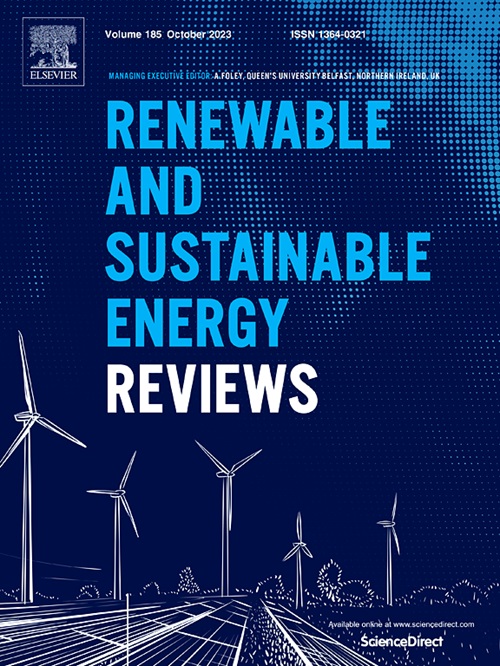双金属氮化钼在生物质转化中的催化应用:最新进展、挑战和机遇
IF 16.3
1区 工程技术
Q1 ENERGY & FUELS
引用次数: 0
摘要
当前的能源危机,以及化石燃料燃烧造成的大量大气二氧化碳排放,促使研究人员寻找对气候影响最小的可再生替代能源。生物质是一种很有前途的低碳生物燃料和化工原料,但其高效转化需要先进的高效稳定的催化系统。基于氮化钼的催化剂,特别是双金属催化剂,在这方面表现出了非凡的前景。本文对近年来生物质转化用氮化钼催化剂的研究进展进行了系统综述,包括通过相控制、形态工程、金属原子包埋和杂原子掺杂等方法来调整结构和电子性能的合成策略。本文还提出了不同活性位点的C-C/C-O键选择性裂解的构效关系以及氮化钼作为催化载体的新应用。本文评述了氮化钼在生物质转化生产生物燃料和化学品方面的独特性能。提出了活性位点表征、催化剂重构机制、再生方案、原位光谱、机器学习辅助设计等重点研究前沿,以促进多金属氮化钼的未来设计和发展。为指导未来可持续生物精炼多金属氮化钼催化剂的开发提供了系统的见解。本文章由计算机程序翻译,如有差异,请以英文原文为准。
Catalytic applications of bimetallic molybdenum nitrides in biomass conversion: Recent advances, challenges and opportunities
The current energy crisis, along with massive atmospheric CO2 emissions caused by fossil fuel combustion, motivates researchers to search for renewable alternative energy sources with minimal climate impact. Biomass emerges as a promising low-carbon feedstock for biofuel and chemical production, though its efficient conversion requires advanced catalytic systems with high efficiency and stability. Molybdenum nitride-based catalysts, particularly bimetallic variants, have shown exceptional promise in this regard. This study performed a PRISMA systematic review of recent advances in molybdenum nitrides catalysts for biomass conversion, covering the synthetic strategies for tailoring structural and electronic properties through phase control, morphology engineering, metal atom embedding and heteroatom doping etc. The structure-activity relationships in the selective cleavage of C-C/C-O bond with diverse active sites and emerging applications of molybdenum nitrides as catalytic supports are also proposed. This review critically analyzes the unique performance of molybdenum nitrides in biomass conversion for producing bio-fuel and chemicals. Key research frontiers such as active site characterization, catalyst reconstruction mechanisms, regeneration protocols, in situ spectroscopy, and machine learning-assisted design etc. are also proposed to promote the future design and development of multi-metallic molybdenum nitride. The systematic insights provided aim to guide future development of multi-metallic molybdenum nitride catalysts for sustainable biorefining.
求助全文
通过发布文献求助,成功后即可免费获取论文全文。
去求助
来源期刊

Renewable and Sustainable Energy Reviews
工程技术-能源与燃料
CiteScore
31.20
自引率
5.70%
发文量
1055
审稿时长
62 days
期刊介绍:
The mission of Renewable and Sustainable Energy Reviews is to disseminate the most compelling and pertinent critical insights in renewable and sustainable energy, fostering collaboration among the research community, private sector, and policy and decision makers. The journal aims to exchange challenges, solutions, innovative concepts, and technologies, contributing to sustainable development, the transition to a low-carbon future, and the attainment of emissions targets outlined by the United Nations Framework Convention on Climate Change.
Renewable and Sustainable Energy Reviews publishes a diverse range of content, including review papers, original research, case studies, and analyses of new technologies, all featuring a substantial review component such as critique, comparison, or analysis. Introducing a distinctive paper type, Expert Insights, the journal presents commissioned mini-reviews authored by field leaders, addressing topics of significant interest. Case studies undergo consideration only if they showcase the work's applicability to other regions or contribute valuable insights to the broader field of renewable and sustainable energy. Notably, a bibliographic or literature review lacking critical analysis is deemed unsuitable for publication.
 求助内容:
求助内容: 应助结果提醒方式:
应助结果提醒方式:


